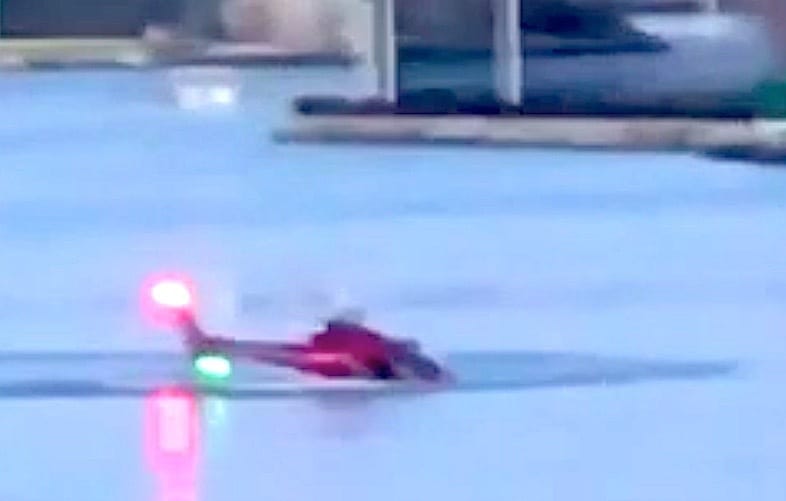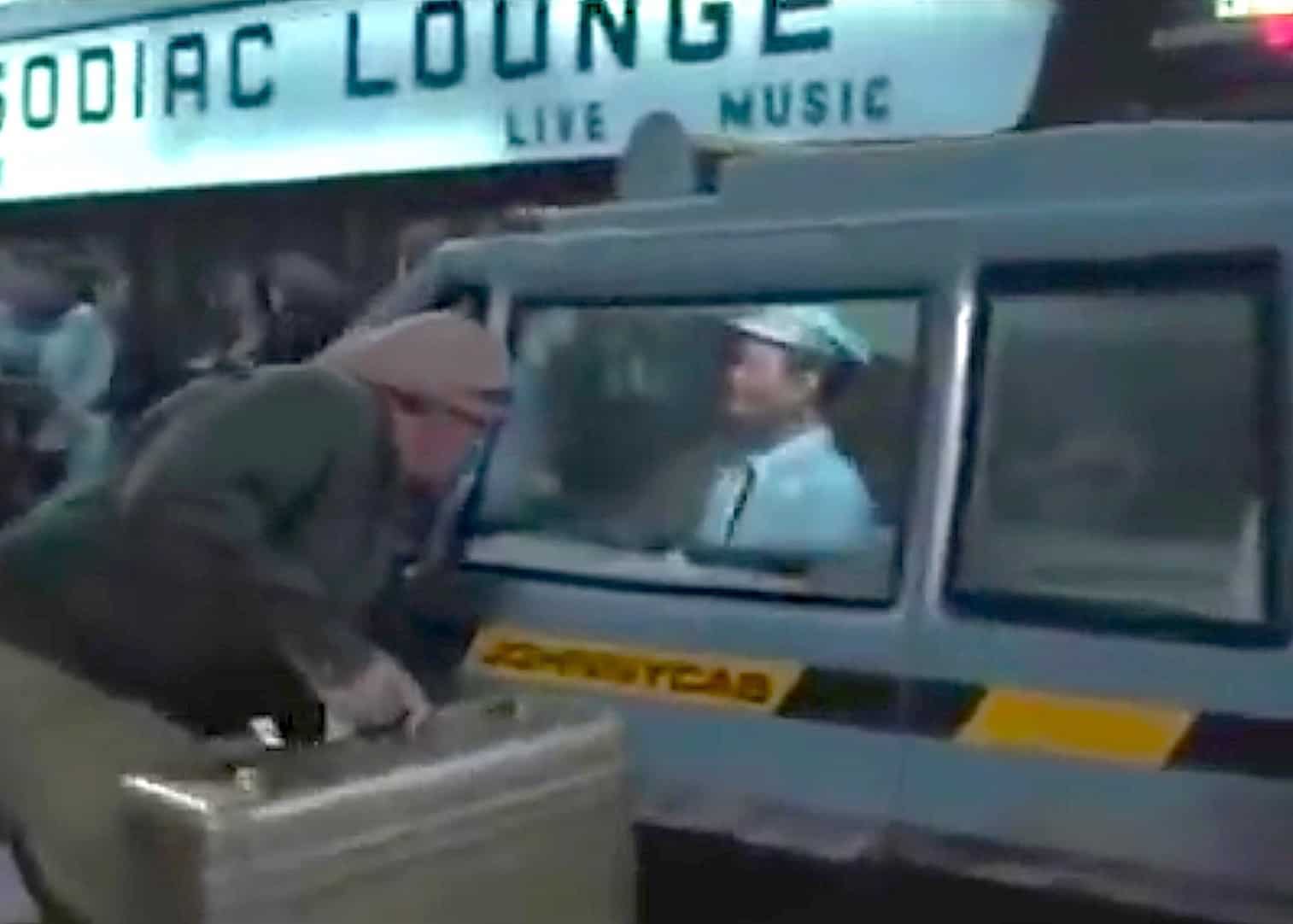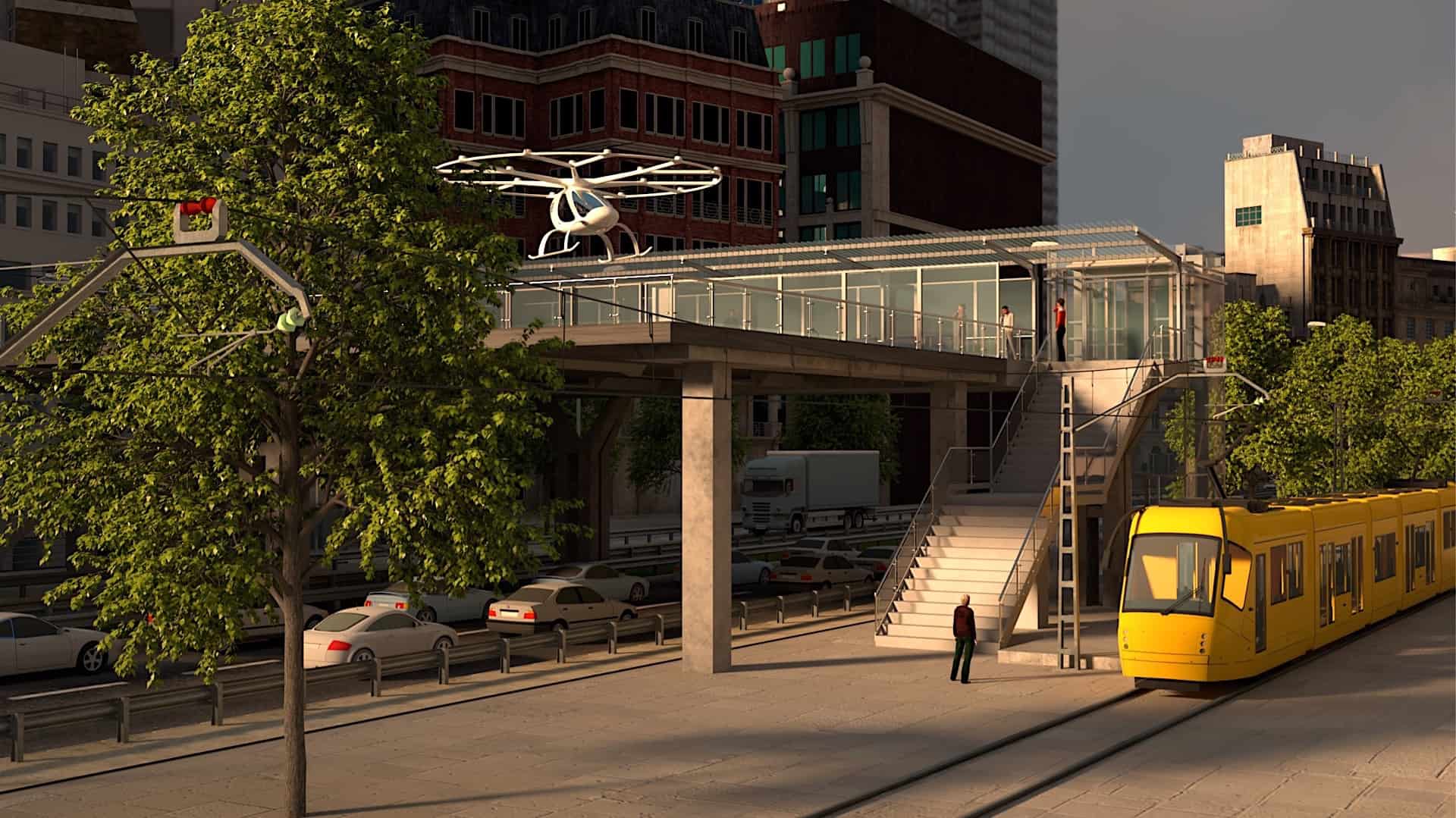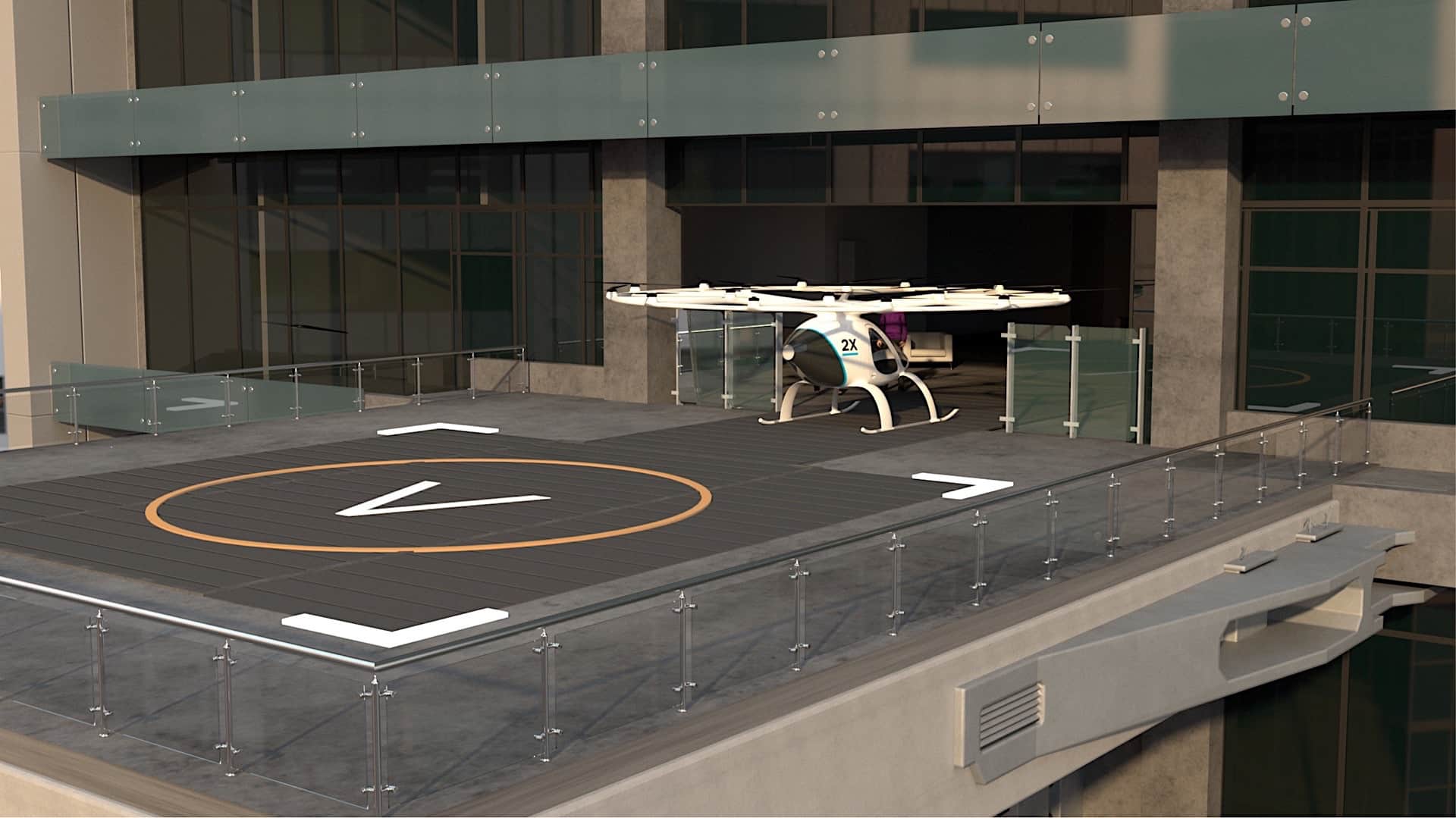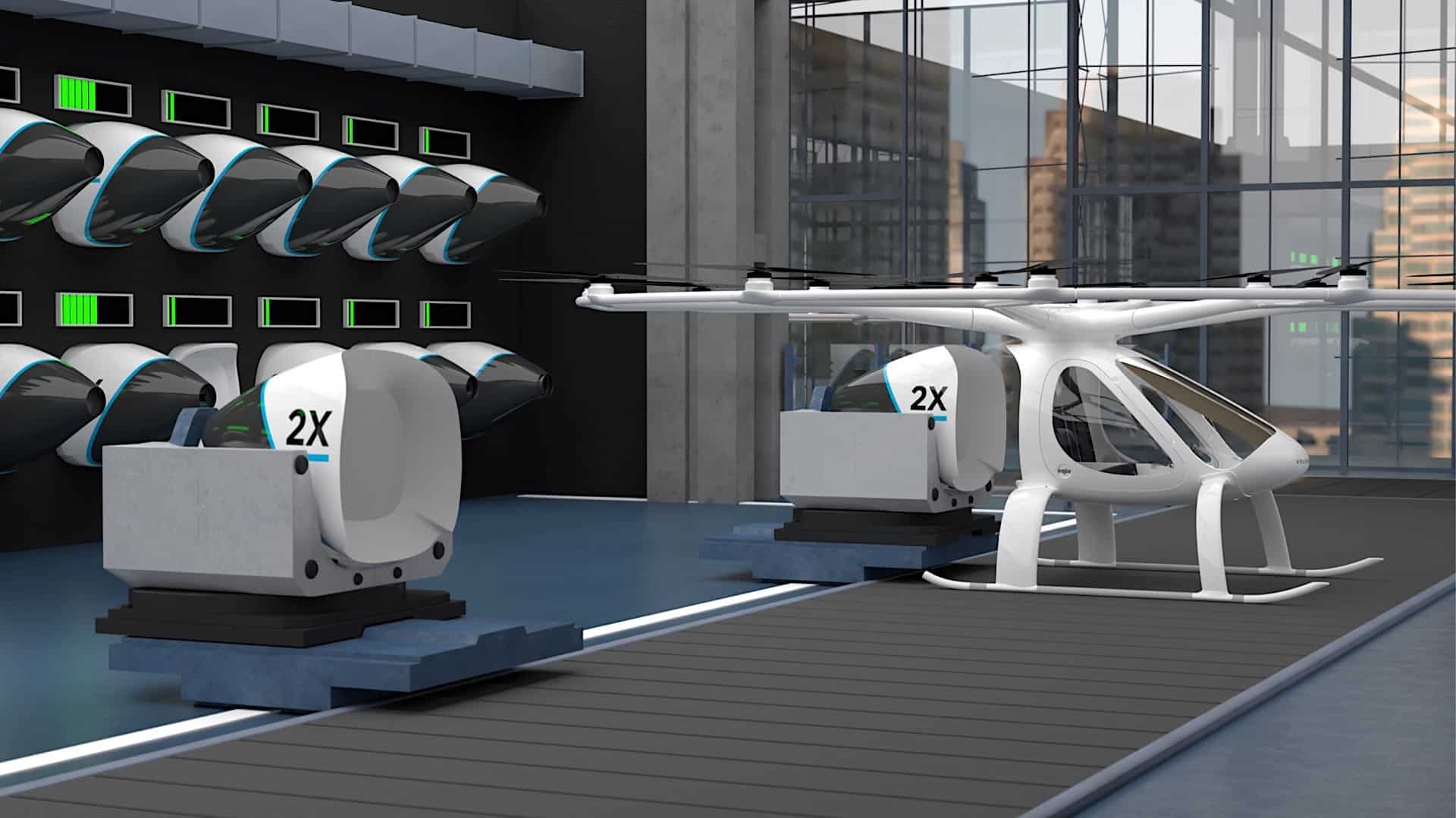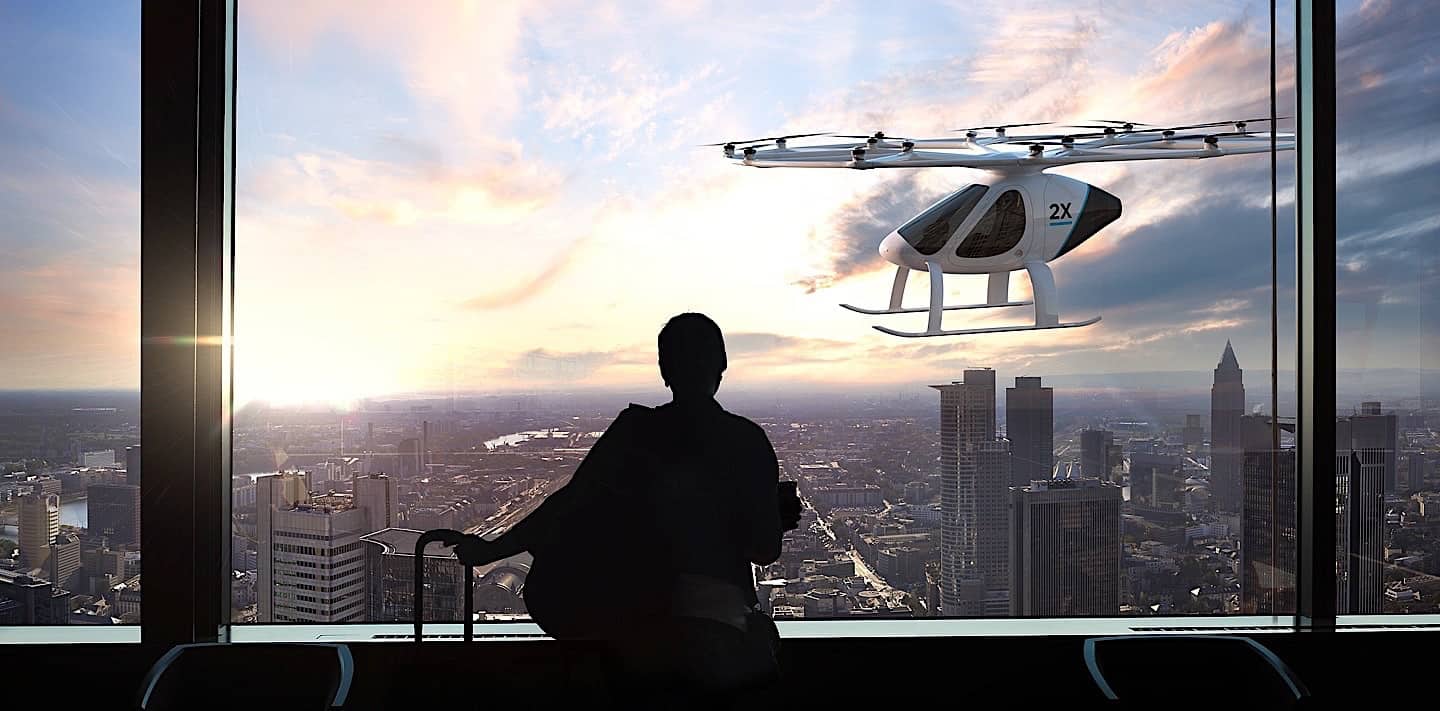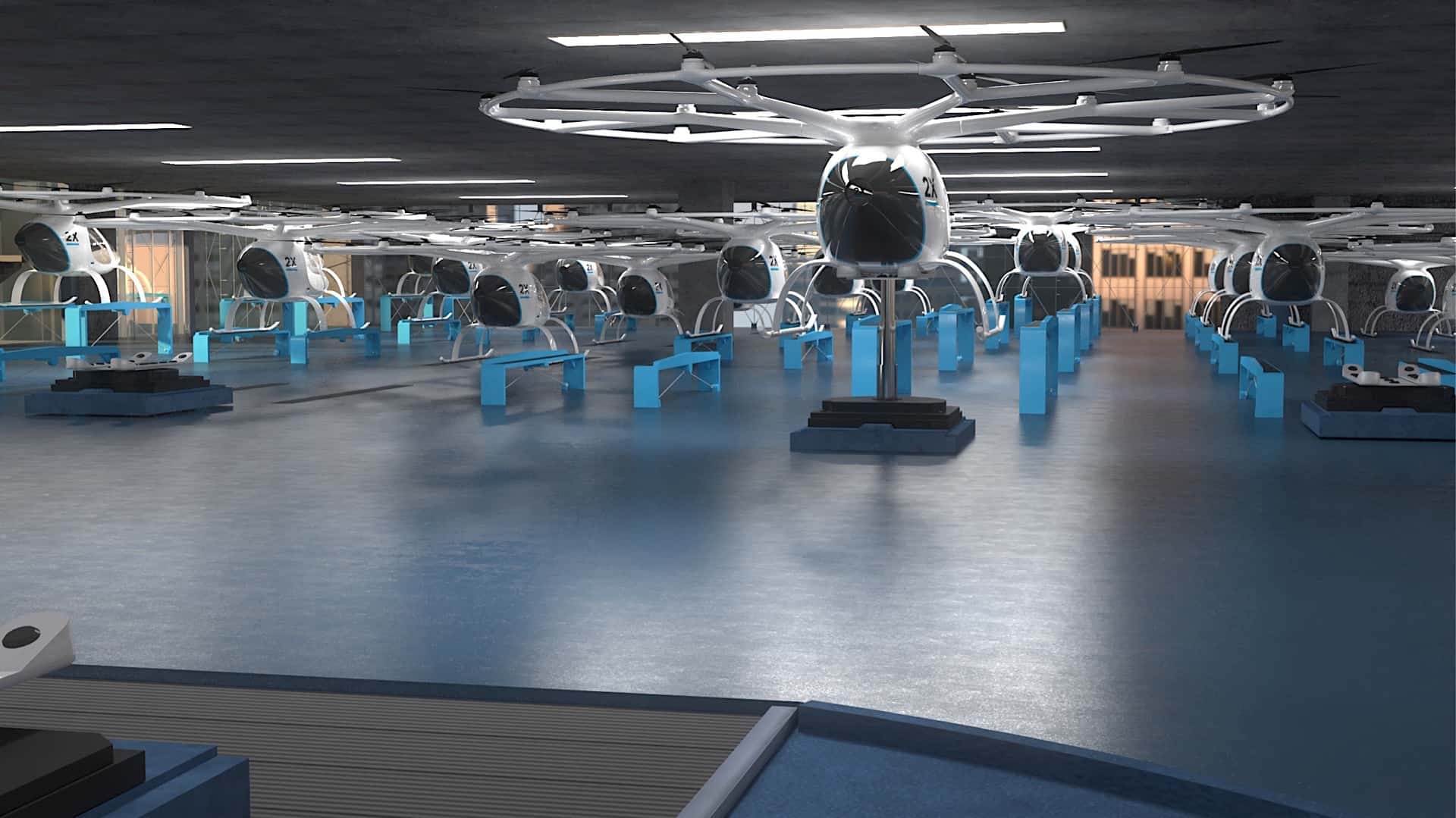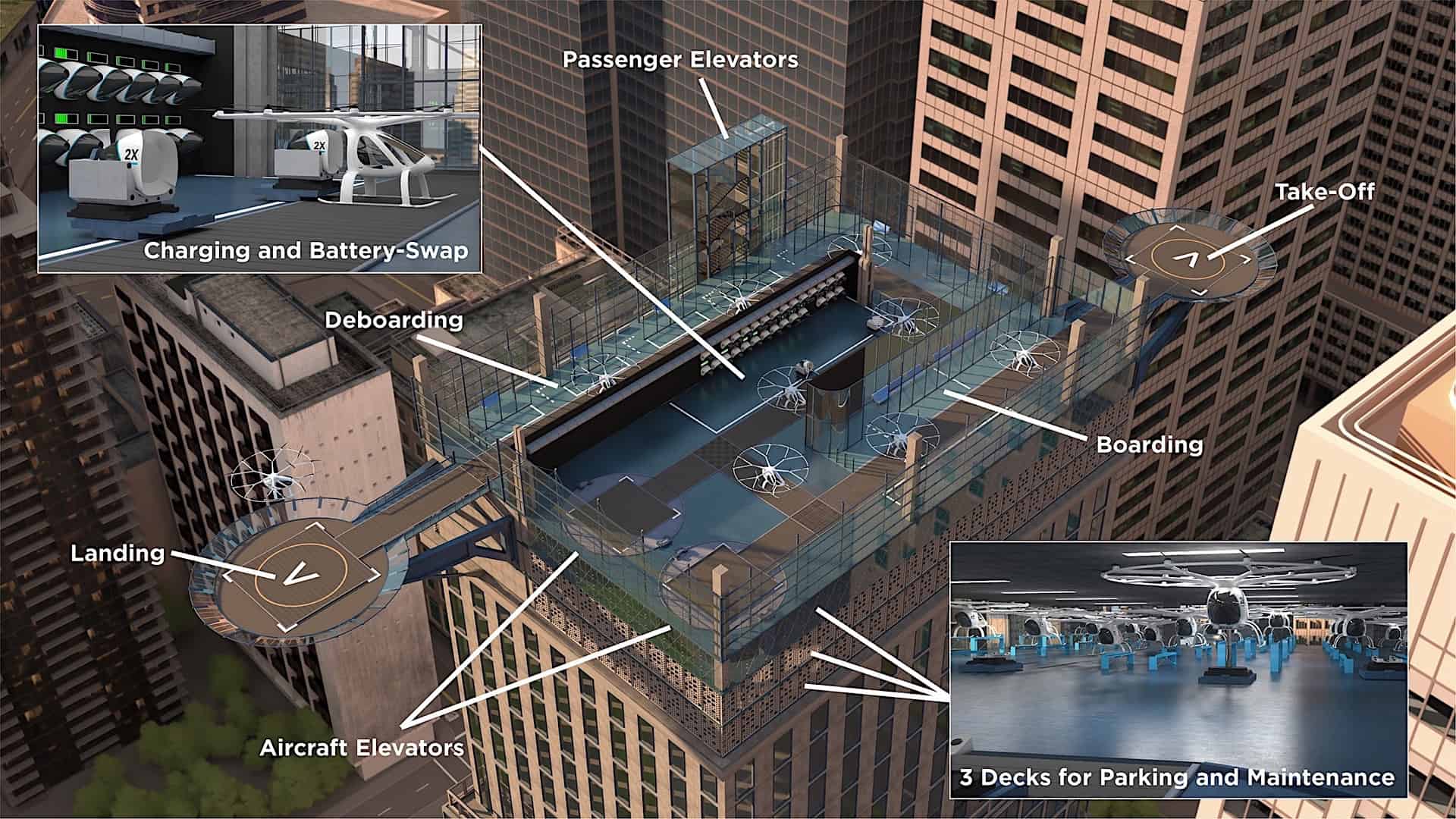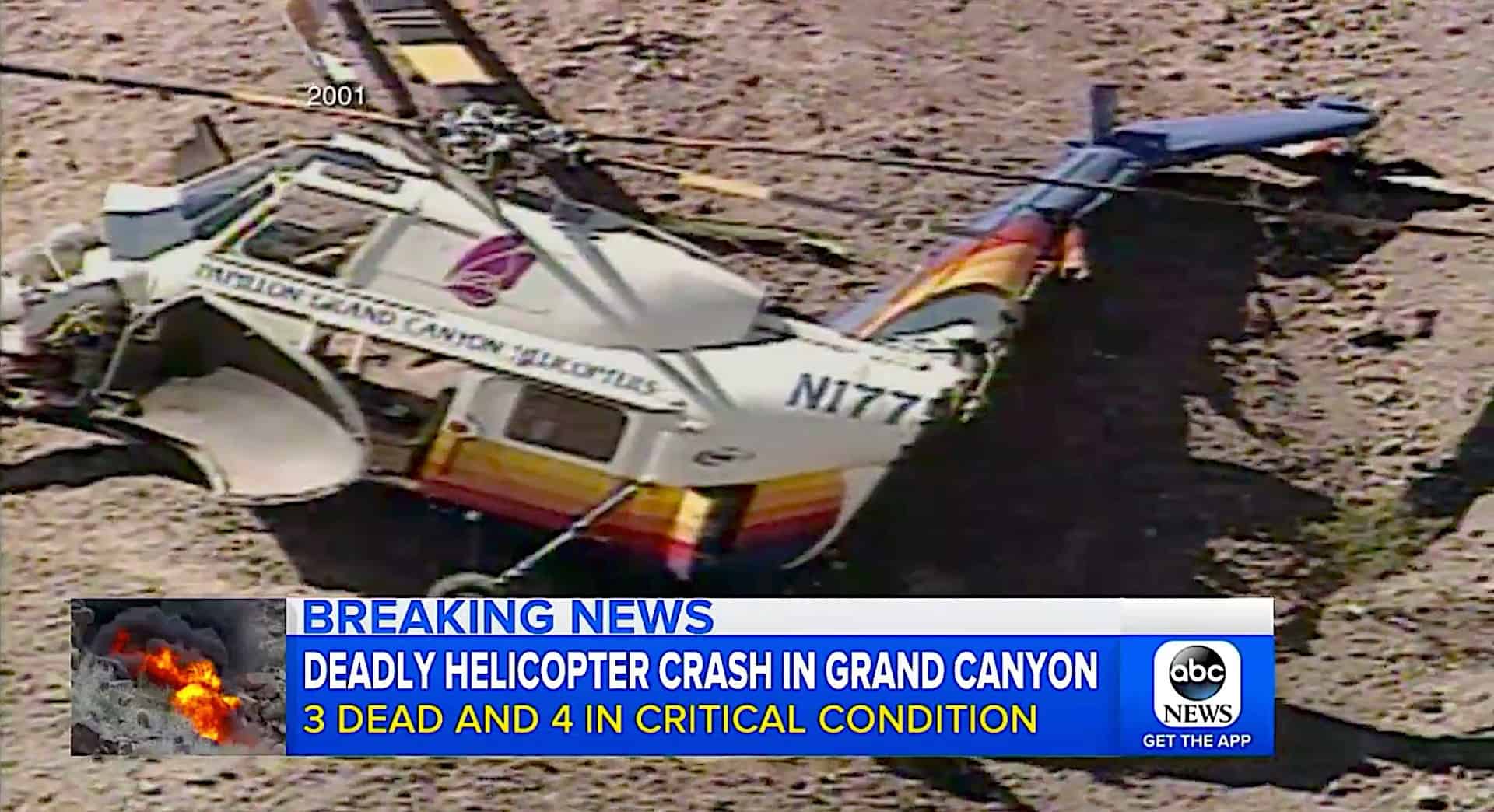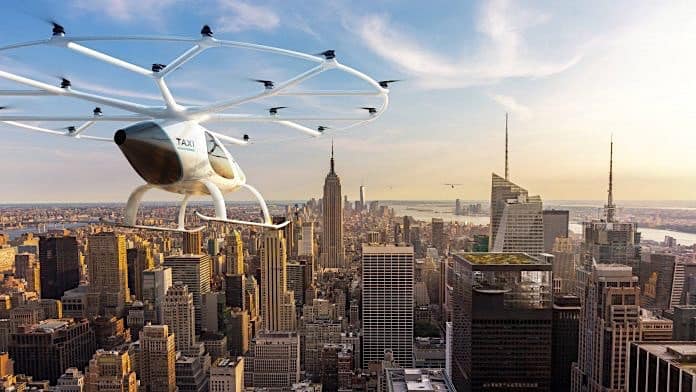What does the future look like? That’s a popular question on cable TV these days it seems. For School Transportation News readers, though, let me rephrase that: In 25 years—one generation from now—what will traditional-looking yellow school buses look like?
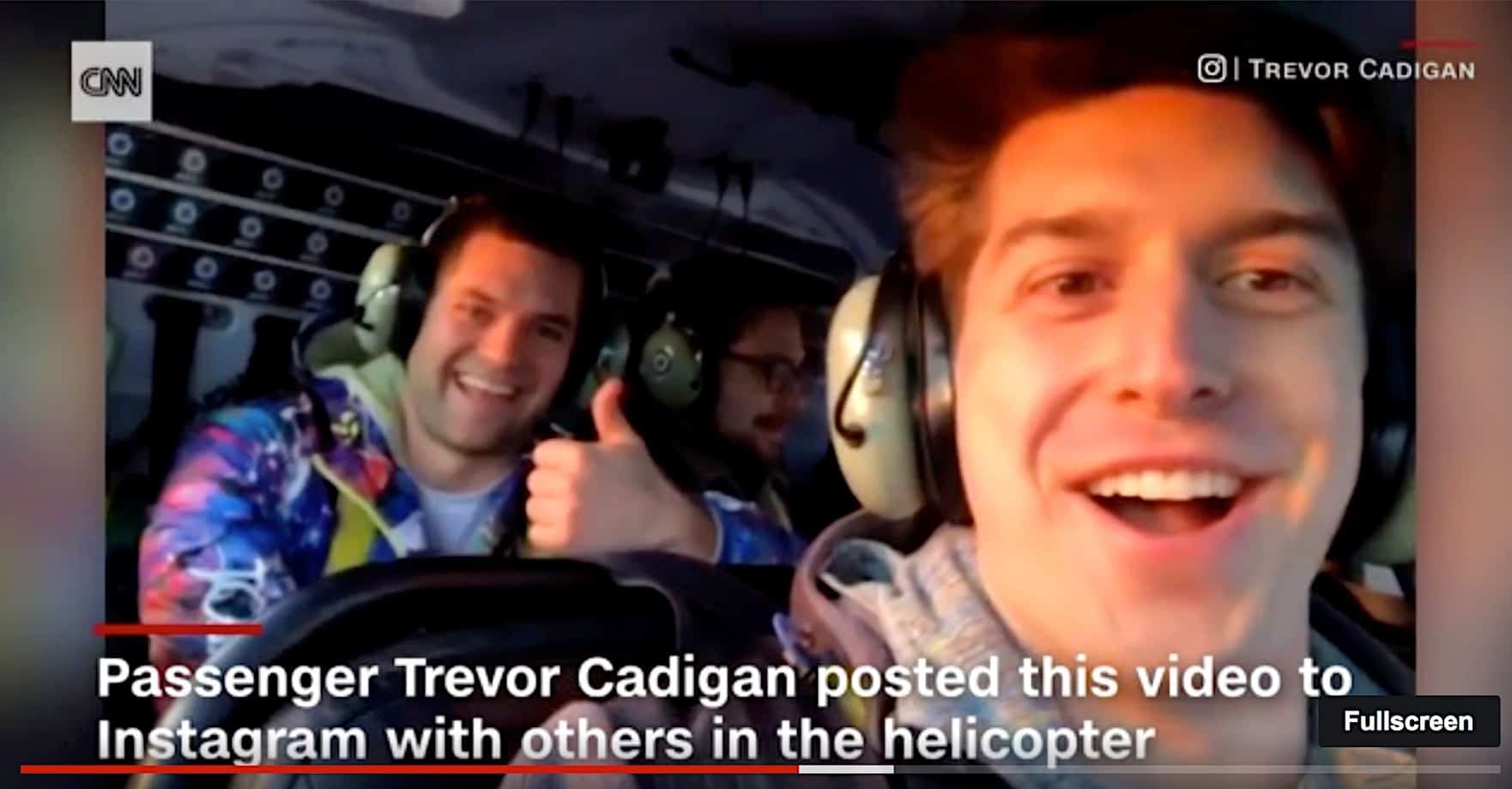
Will most of them even have round rubber tires? Or will they instead operate more like today’s helicopters, but be large-sized pilot-less drones? Just think—no more #!%!%$#! stop-and-go, awful traffic gridlock on our roads and freeways. You may begin to see why there could be substantial demand for a solution in the making.
Are global behemoth multi-national corporations like Daimler, which has a major school bus subsidiary, and computer-giant Intel, aggressively acting to get in on the ground floor?
Would your questions for the manufacturers of airborne school bus drones be similar to mine?
- How comfortable would anxious parents, concerned school boards and worried school principals be, with entrusting their precious kids to ride in a fleet of essentially robotic drone helicopters? With no human driver to immediately deal with rambunctious hormone-driven teens when their behavior goes haywire or endangers safety, good luck with that one.
- How safe could pilot-less passenger air-borne vehicles possibly be that look like blown-up versions of popular kid toys? Don’t kid toys always seem to break, by the way? They always did, I remember that fact very well. Remember those little plastic mini-cars that you run into the nearest wall and they instantly blow apart into about 10 little pieces that go flying, but you quickly stick back together all of the same little pieces once again, so you can try a different play crash test scenario? Those were really great, because you could easily imitate in your own safe home, a mini-version of NHTSA’s infamous dummy crash tests, with those authentic-looking yellow and black circles painted on the side of the stupid-looking dummies sitting in the front seats. “Look, I can play Traffic Safety Engineer too, just like the grown-ups!”
- Could such supposedly “technologically advanced” vehicles record a 100-percent, no-fatality record over the first few years of service? Go ahead and prove it, a negative. What evidence can there be to study in advance of the first trial run with humans? Oh, by the way, who wants to be the first human test guinea pig? Does the guinea pig get paid a bonus if the vehicles land safely after it runs its first bonafide route, or do you try to get a “volunteer” inmate from Death Row at Alcatraz? Honestly, who would really care if you ok using some mass-killer who is one-tenth the way through serving a 500-year sentence? Or, do you track down one of those three inmates who escaped from Alcatraz in a home-made rubber dinghy, only to resurface 50 years later with a postcard that taunted the FBI about not ever finding them, and no, they really didn’t die from the ice-cold water after all. How would everyone feel if the death row inmate turned out to be Clint Eastwood, one of the three movie inmates who staged a make-believe dummy prisoner to look like he was asleep in his bunk bed? And by the way, make sure to check him for those bizarre weapons fashioned out of forks, spoons, and toothbrushes, before he climbs onboard the taxi test vehicle. You never know about those plastic toothbrushes, let me tell you. And, they are completely undetectable by the school entrance X-ray machines.
- What happens when the first major crash occurs? Would this halt the continued use of these vehicles for transporting kids to school? Would ravenous politicians jump right in the fray, to restrict their use to only 18 and over riders?
- Would delivery-type passenger drones be restricted only to military and emergency vehicle use first? You know, they could drop off such life-saving vital items like water, band-aids, flares, plastic roadside red reflector triangles that glow in the dark, Pop-Tarts, Jell-O pudding, Snickers, Twinkies (don’t forget, they last at least 50 years in an underground bomb shelter), and of course, the ever-present boxes of Natural Apple Juice, complete with a one-sixteenth inch wide red mini-straw. But not if this is in California, where they may have already been banned—unless they have a bungee cord tied to them to help ensure they stay with the juice carton and don’t wind up in the nearest street gutter. You know, you really have to think through all of those important details.
- What crazy school district would be the first in the nation to undertake a pilot project, where it individually picks up and safely delivers each student to school each morning and returns him/her safely home at the end of each school day? Maybe the school district should first test a dry run with an extra-large pepperoni pizza with sliced olives and mushrooms. The winning pizza (i.e., school bus vendor), is whichever pizza arrives at its final destination within 30 minutes or less, or you get a free pizza. Just think of it: Free Pizzas for every school bus route! But with Pepsi, no Coke. And fries are extra, but none with chili cheese toppings, since they make such a mess to clean up. We have our consensus committee standards to maintain.
Plus, don’t forget the blast-off ejector seats. You do know that every flying vehicle must have cool ejector seats for the pilot and co-pilot, just like in Top Gun.
My very real question, though, is whether or not the flying bus taxis can be ordered with optional ejector seats for the passengers. Just think of it, some unruly kid dares to stick his head up over the row of seats ahead of him, and BANG, push the ejector button, baby! Now that is power for the drivers, let me tell you. That’s a much better—and faster—rule enforcer than trying to scare kids with the old Jason-at-the-campfire-with-the-long-steel-hook tale.
You just know that some punk kid is dying to test that old, fat, cranky, white-haired bus driver with the arthritic knuckles gripping the over-sized black steering wheel at 10 and 4. But just think of it—once that kid goes flying skyward at 90-miles per hour, screaming through the auto-opening bus canopy, s**t happens. After that debut, oh man, there is going to be 100 percent compliance throughout the school district for the rest of the school year, I absolutely guarantee it.
Once that kid goes flying skyward at 90-miles per hour, screaming through the auto-opening bus canopy, s**t happens.
And hey, who needs to even carry those infamous swat paddles in the principal’s office, when every school bus driver in the district can quite easily instill instant discipline, and a fail-safe remedy, with just the push of one big red button on his control panel? Now is that true job satisfaction or what? Better than that extra hour of overtime, right? That’s right up there on the list of job benefits, with 401k’s and covered health insurance.
But while flying school buses seem far-fetched to be the norm circa 2042, I can just imagine a then 101-year-old Harrison Ford, who does, in fact, fly planes and commute in helicopters, as the first pilot, just like he glided around effortlessly in the film, “Blade Runner.” Black shiny overcoat, slick hair, foul odors, constant drizzling rain, beautiful girlfriend (Sean Young, even if she does require periodic defragging), and 3-D imaging systems.
Or, Arnold Schwarzenegger, The Governator, grabbing a passenger drone taxi in “Total Recall,” with Johnny Cab painted on the side. The “driver” swivels his head around to look at everything—the passengers, oncoming traffic, on-rushing hitmen, the sky above, and his instrument panel—all within 0.5 seconds. But don’t worry, he’ll be back.
And imagine this—mechanical drone pilots (drivers), not only don’t go out on strike, they don’t swear, they don’t smoke, they don’t complain about their low wages, and they always show up the next day for work. Added to that, they don’t complain about the (lack of) hours they work, getting up before the sun rises, or screaming obnoxious kids—and they don’t have to be fed, either. Drone pilots/drivers sort of have a nice ring to it, you might say.
Then in terms of undesirable controversies, especially during a high-stakes, high-tension congressional election year, would this be more—or less—controversial than installing 3-point seat belts on every school bus?
Would this be tomorrow’s tragic hot issue—whether to entrust your kids to a pilot-less drone that may drop straight down out of the sky when its supposedly rechargeable green batteries fail to adequately carry a full charge every day—just like our cell phones fail to fully charge any more after a year of daily usage?
You’d have to really ask yourself, wouldn’t every politician in America instantly jump on the “tragedy bandwagon” to immediately introduce severely restrictive legislation to permanently ban drone school buses, after 24-hour news channels run nonstop loop coverage of the first fatal crash?
You just know how it would go—a 10-passenger drone goes SPLAT on an asphalt parking lot from several stories up, after it fails to properly land on top of the school administration building. Yellow accident tape, 10 blue blankets covering the dead bodies, and that’s not even getting to the plight of the poor pilot (i.e., tomorrow’s poorly paid school bus driver), who got wayyy too much glare in his eyes from the rising sun and missed the landing zone entirely. Some gory disaster like that.
In a sick way, that’s every politician’s dream. Going to bat for poor, defenseless—and dead—emotionally-wrecked school kids who will forever suffer from PTSD if they are lucky enough to survive. The politicians would predictably jump into action to calm nervous parents. What great and supposedly unscripted cable drama.
Just think about it from the politicians’ point of view (ugh, bleck). Daily TV interviews and priceless on-camera time that you can’t buy, onsite crying of hundreds of parents and schoolmates, candlelight vigils that night and for five nights after (all breathlessly covered by live cameras and thoughtless, clueless, reporters), marches with banners stretching across two lanes of traffic, dozens of wailing ambulances, and in general, just plain old mass hysteria. Dogs and cats living together. The shock, oh the horror. Drinking in Chicago. Who knew?
Then the community activists swing into action, Screaming for Change, answers and new laws, turning on the stream of tears when a video camera points their way. Little kids, unable to sleep at night, traumatized now for life. And parents of surviving students, just thankful that they never signed off on that waiver slip the school quietly asked all parents to sign at the beginning of the school year. You know, that’s the one that slyly and legally absolves the school district of legal liability, in the event that some unforeseen Act of God, natural disaster, or battery failure, should ever happen. Basically, any possible scenario whatsoever, is covered.
This might sound a little cynical or far-fetched, but think about it.
What happened this week is that a company in Needham, Mass., PTC, announced that German start-up Volocopter had chosen its Windchill product lifecycle management solution for developing its “autonomous flying transportation systems.” According to PTC, Windchill will “record, configure and secure interdisciplinary product structures, requirements descriptions and documents, and manage mechanical, aerodynamic, and electronic CAD models and the associated system software.”
As a result, the world’s first “autonomous air taxis are becoming a reality, thanks to German start-up Volocopter and its use of @PTC_Windchill product lifecycle management (#PLM) solution.”
The other company, Volocopter, wants to revolutionize (I am always realllly leery when I see that adjective used way too easily) “urban mobility with its autonomous air taxis.” Volocopter claims it has developed the “world’s first, purely electrically powered, autonomous multi-copter, which is based on drone technology and is large enough to carry two people. The Volocopter is emission-free, very quiet, and stable in flight. The fully redundant power train, driven by 18 independently-controlled propulsion rotors and an intelligent autonomous control system, make the Volocopter one of the safest aircraft.”
Daimler and Intel, the company announced, are just a few of its strategic investors.
“We are creating tomorrow’s mobility solution in the third dimension. Urban air taxis are a completely new market, and we are treading on new ground every day,” said Jan-Hendrik Boelens, CTO of Volocopter.
According to its announcement this week, way back in 2011, its innovations officially began when Volocopter successfully launched the manned flight of the world’s first purely electric multi-copter. Then, in 2016, Volocopter was granted provisional licensing for a two-seater Volocopter by the German aviation authority. Last year, the first-ever autonomous flight of an air taxi was conducted, in cooperation with RTA Dubai.
Tread lightly, and carefully, really carefully, and s l o w l y; that’s my reaction and personal opinion to the announcement today. I am not so anxious to bet anyone’s life (definitely not mine, but some talking head on cable TV, I am not so sure of), on flying daily in a gigantic drone helicopter. And definitely not somebody’s precious kid. And really really, not your own kid. Maybe some other bad kid, though, but it depends on if he is on the school’s honor roll that month or not.
Sorry, but I can’t help but think of the periodic, well-publicized helicopter crashes of tourists sightseeing around the Grand Canyon, or the thrill-seekers in cool-looking red helicopters, zipping from skyscraper to skyscraper in Manhattan. No matter what the situation, some people just love to experience a good thrill. Just not with my kids, or yours, thank you.
I have sometimes said that there are limits to almost everything in life. This seems to be one of them. At least in this decade. But next decade, who knows?
Your reaction and point of view may be different. Or not. Email me.
